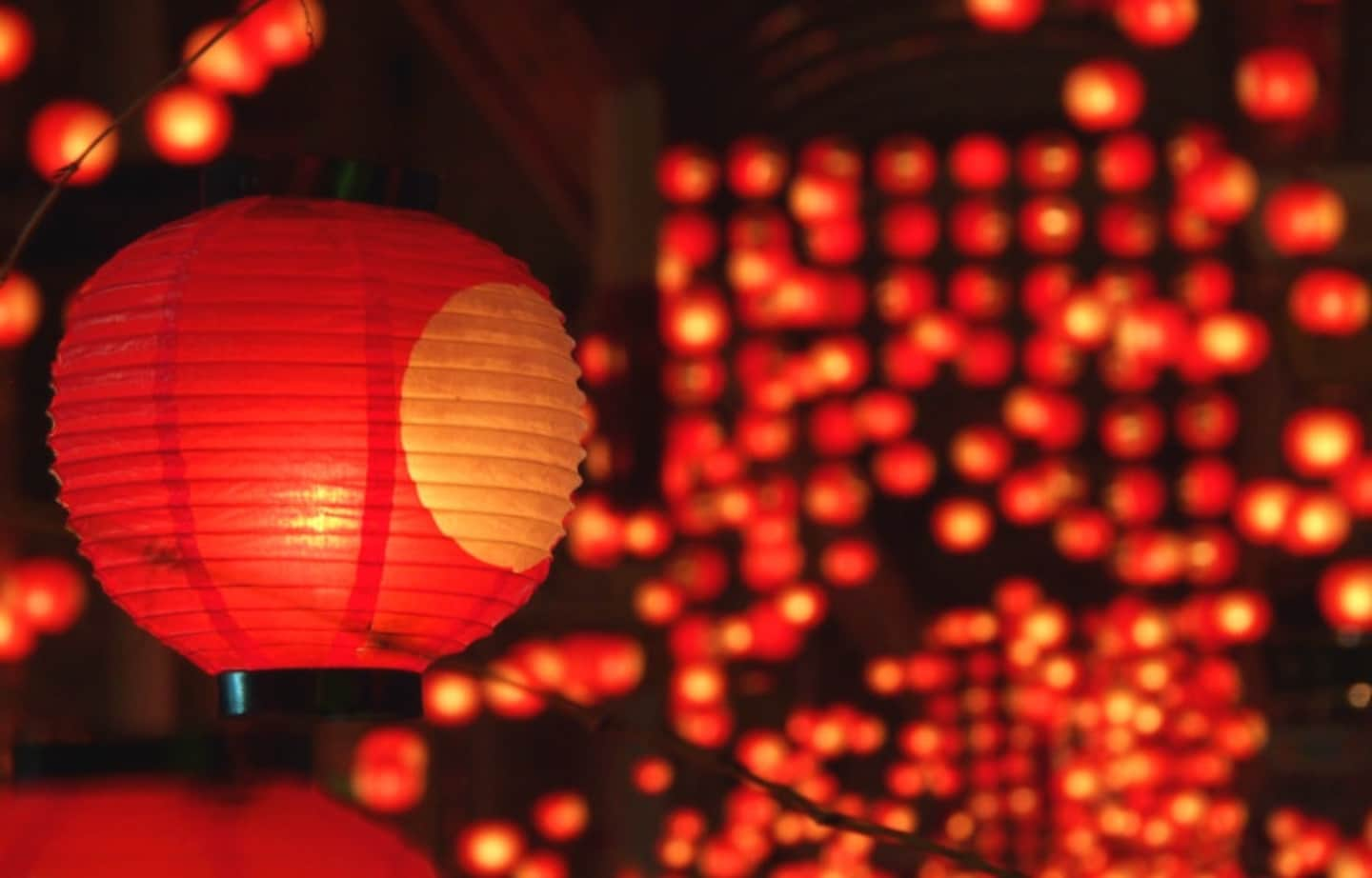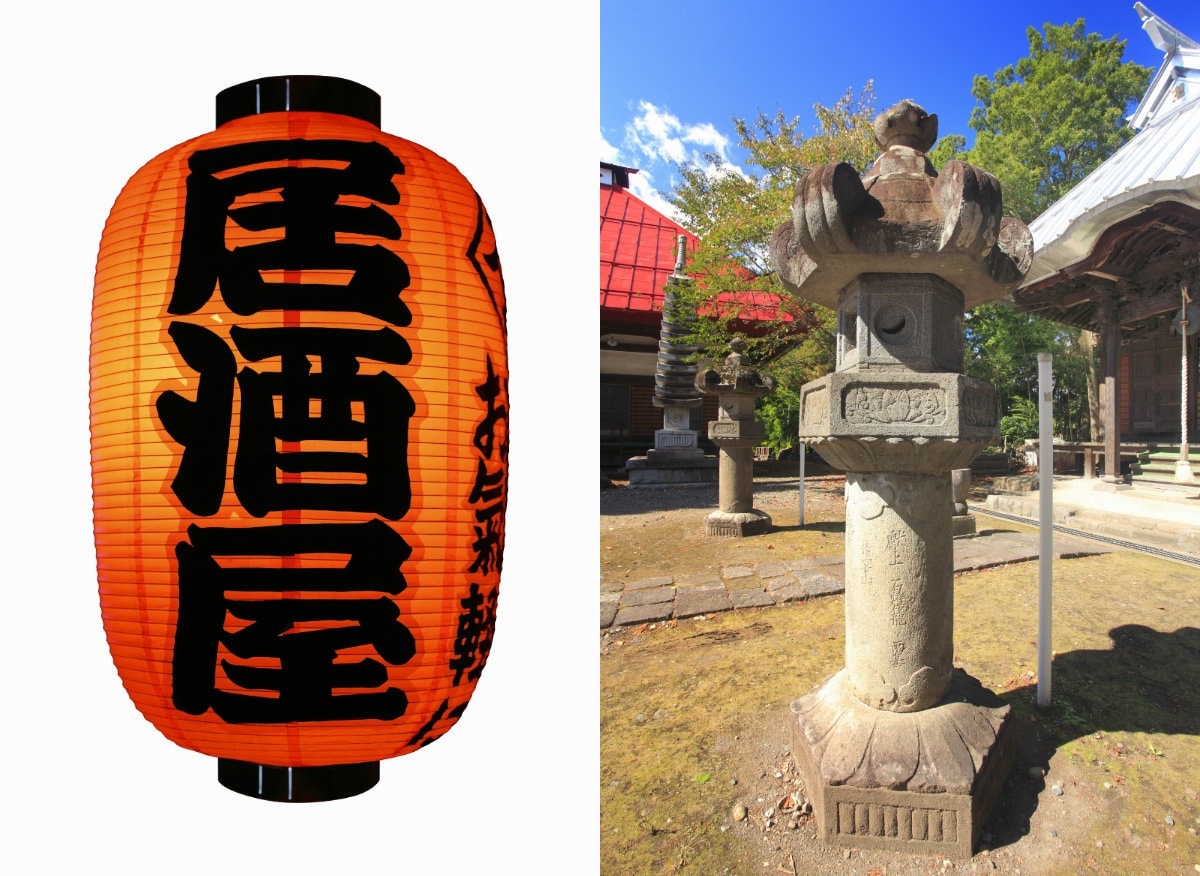8 Gorgeous Japanese Lantern Festivals

Japanese lantern festivals are held to ward off evil or send off the dead, or just to warm up a chilly winter. Some date back centuries, while others are recent innovations. Whatever their provenance, they are a spectacle to behold!
By Michael KanertJapanese Lantern Types

Most lanterns you'll see at a Japanese lantern festival are called chochin (提灯), which literally means "bucket light." Chochin are cylindrical lanterns made of paper stretched over a split bamboo frame that can be folded up when not in use. They were made to be carried when walking at night in the days before electricity. Nowadays you can predominantly see chochin outside Japanese-style pubs, or izakaya—which are sometimes referred to as aka-chochin (赤提灯), or "red lanterns."
A more general kind of lantern is called a toro (灯籠, literally, "light basket"). Toro are typically made of materials such as metal and wood. Stone lanterns found outside temples are known as ishi-doro (石灯籠, literally, "stone toro"), while hanging lanterns are tsuri-doro (吊り 灯籠, hanging toro). Since this is a general term for a lantern, it's often applied to lantern festivals that don't specifically feature chochin paper lanterns.
8. Tado Taisha Chochin Matsuri (Mie)
https://www.youtube.com/watch?v=PVZGs3hluXc
Tado Taisha Shrine is located just west of Nagoya in the city of Kuwana in northeastern Mie Prefecture. This venerable shrine is said to have been established during the reign of Emperor Yuryaku, who's believed to have reigned from 456 to 479.
One of the most-visited shrines in Mie, its big summer event is the Tado Taisha Chochin Matsuri (Tado Taisha Shrine Lantern Festival), held on August 11 and 12 every year. Worshipers can buy one of four different styles of chochin (running anywhere from ¥2,000 to ¥10,000) to have it hung in the temple grounds, expressing their wish for household safety, business prosperity, health or other desires. The result is that the shrine is covered in thousands of lanterns.
The shrine is also known for the Tado Festival, held May 4 to 5, featuring horse jumping and horseback archery (yabusame) on the second day. A separate Yabusame Festival is also held November 23.
7. Hirosaki Castle Yuki-Doro Matsuri (Aomori)
https://www.youtube.com/watch?v=WsRLKIAwl-o
The Hirosaki Castle Yuki-Doro Matsuri (Snow Lantern Festival) began in 1977. The event features roughly 200 snow lanterns and 300 miniature igloos with candles inside lined up around the castle's lotus pond, with Hirosaki Castle—one of Japan's 12 remaining original-construction castles—illuminated in the background. The event runs for four days beginning on the second Thursday in February.
6. Miwaka Isshiki Chochin Matsuri (Aichi)
https://www.youtube.com/watch?v=bUWqbv-N8pI
The Miwaka Isshiki Chochin Matsuri (Miwaka Isshiki Lantern Festival), better known as the Dai-Chochin Matsuri, is held on August 26 to 27 each year. Dating back to bonfires said to have been lit to chase away sea demons some 450 years ago, the festival now features six pairs of giant lanterns as big as 10 meters (32.8 ft) tall and 5.6 meters (18.4 ft) in diameter, many illustrated with colorful scenes from Japanese myths and legends. The event takes place at Mikawa Isshiki Suwa Shrine in Isshiki City, which is located south of Nagoya on Mikawa Bay.
Features on the first day include watching the giant lanterns being raised at 8 a.m., taiko drum performances at 5 p.m., and the lighting of the lanterns at 7 p.m., when people actually climb into the bottom to place a 1-meter (3.3 ft) candle inside each one. The lanterns are lowered at 5 p.m. on the second day.
If you'd like more giant lanterns in the area, you can also head to the Miyoshi Dai-Chochin Matsuri (Miyoshi Great Lantern Festival) in Miyoshi City, located just east of Nagoya. Held over the third Saturday and Sunday in August at Miyoshi Inarikaku Manpukuji Temple, this one features three 11-meter (36 ft) lanterns, as well as fireworks on Sunday.
5. Kaga Yuzen Toro Nagashi (Ishikawa)
https://www.youtube.com/watch?v=5eXMCmbjc8M
Toro nagashi (灯籠流し) literally means "flowing lanterns." It's a ceremony in which paper lanterns are released down a river or into the ocean, often performed on the last evening of the summer Obon season, when it's believed that the spirits of one's ancestors return to the living world. The lanterns are said to guide the spirits back to the other world as they float away.
The Kaga Yuzen Toro Nagashi sees some 1,200 lanterns float down the Asanogawa River. The event is held the night before the Hyakumangoku Matsuri, the largest festival in Kanazawa, which takes place on the first Saturday in June.
You can find more toro nagashi festivals, including events in Tokyo and Kyoto, here.
4. Tsunan Yuki Matsuri (Niigata)
https://www.youtube.com/watch?v=44uNBVw9RN4
The Tsunan Yuki Matsuri (Tsunan Snow Festival) features over 1,000 lanterns floating up into the sky above the New Greenpia Tsunan ski area. Held on the second Sunday of March in the town of Tsunan, Niigata, the region's heavy snowfall forms the serene backdrop for a stunning spectacle.
While the snow festival has been going on for more than 40 years, the "sky lanterns" were only added in 2012. Couples will send a lantern up together with a prayer for good health written inside.
3. Nihonmatsu Chochin Matsuri (Fukushima)
https://www.youtube.com/watch?v=jEbFocfsVl0&list=PLo8IKEHluXc7tfTGz_9g41CF6lYWwLPFl
The Nihonmatsu Chochin Matsuri (Nihonmatsu Lantern Festival) features floats covered in roughly 300 chochin paper lanterns. Held October 4 to 6 each year, the highlight is the seven taiko drum floats paraded out on the evening of the 4th, each representing a different town in the region. Keep an eye out for each town's distinctive yukata as well. On the 6th, the big event is seeing three of the floats against the backdrop of Nihonmatsu Castle.
2. Kanto Matsuri (Akita)
https://www.youtube.com/watch?v=3i6cDD98jtg
Held from August 3 to 6, Akita Prefecture's Kanto Matsuri (Kanto Festival) is counted among the Three Great Summer Festivals of Tohoku, the northeastern region of Japan's main island. Now drawing over 1 million people annually, the festival is said to date back to the days of Lord Satake Yoshimasa (1775-1815) of the Akita Clan.
Kanto (竿燈) literally means "rod lantern," and the feature of the festival is participants supporting poles up to 12 meters (40 ft) long and weighing as much as 50 kilograms (110 lbs), each festooned with as many as 46 paper lanterns. These aren't so much carried as balanced precariously on participants' hips, shoulders, palms, foreheads or even chins as they try to outdo one another's feats of balance.
1. Yamaguchi Tanabata Chochin Matsuri (Yamaguchi)
https://www.youtube.com/watch?v=AQhDUfuNkts
While Sendai may feature Japan's most famous Tanabata celebrations, Yamaguchi City offers a particularly spectacular show for the celestial lovers Orihime and Hikoboshi, who, according to legend, have been tragically separated by the Milky Way.
The Yamaguchi version is said to have originated during the Muromachi Period (1336-1573), when feudal lord Ouchi Moriharu hung lanterns to pray for his ancestors during the summer Obon season. The practice has since grown into an extravaganza of some 100,000 chochin lanterns displayed throughout the city streets, including a chochin tunnel, a 14.5-meter-tall, 38-meter-wide (47.5 x 124.7 ft) "screen" made of roughly 500 chochin, a chochin tree made of some 800 paper lanterns, and various floats covered in up to 150 paper lanterns each. The spectacle can be seen from August 6 to 7 each year.



